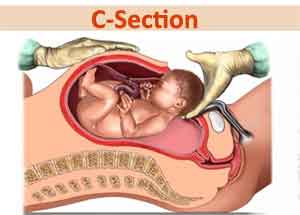- Home
- Medical news & Guidelines
- Anesthesiology
- Cardiology and CTVS
- Critical Care
- Dentistry
- Dermatology
- Diabetes and Endocrinology
- ENT
- Gastroenterology
- Medicine
- Nephrology
- Neurology
- Obstretics-Gynaecology
- Oncology
- Ophthalmology
- Orthopaedics
- Pediatrics-Neonatology
- Psychiatry
- Pulmonology
- Radiology
- Surgery
- Urology
- Laboratory Medicine
- Diet
- Nursing
- Paramedical
- Physiotherapy
- Health news
- Fact Check
- Bone Health Fact Check
- Brain Health Fact Check
- Cancer Related Fact Check
- Child Care Fact Check
- Dental and oral health fact check
- Diabetes and metabolic health fact check
- Diet and Nutrition Fact Check
- Eye and ENT Care Fact Check
- Fitness fact check
- Gut health fact check
- Heart health fact check
- Kidney health fact check
- Medical education fact check
- Men's health fact check
- Respiratory fact check
- Skin and hair care fact check
- Vaccine and Immunization fact check
- Women's health fact check
- AYUSH
- State News
- Andaman and Nicobar Islands
- Andhra Pradesh
- Arunachal Pradesh
- Assam
- Bihar
- Chandigarh
- Chattisgarh
- Dadra and Nagar Haveli
- Daman and Diu
- Delhi
- Goa
- Gujarat
- Haryana
- Himachal Pradesh
- Jammu & Kashmir
- Jharkhand
- Karnataka
- Kerala
- Ladakh
- Lakshadweep
- Madhya Pradesh
- Maharashtra
- Manipur
- Meghalaya
- Mizoram
- Nagaland
- Odisha
- Puducherry
- Punjab
- Rajasthan
- Sikkim
- Tamil Nadu
- Telangana
- Tripura
- Uttar Pradesh
- Uttrakhand
- West Bengal
- Medical Education
- Industry
Curbing the surge in caesarean delivery : WHO revises childbirth guidelines to

Geneva: The UN health agency said it has revised a benchmark used by health professionals worldwide in caring for women during childbirth because it has caused a surge in interventions like caesarean sections that could be unnecessary.
Since the 1950s, a woman progressing through labour at a rate slower than one centimetre of cervical dilation per hour has been considered "abnormal", said Olufemi Oladapo, a medical officer with the World Health Organization's department of reproductive health.
When doctors and other care providers confront labour moving slower than that rate, "the tendency is to act", either with a caesarean section or with the use of drugs like oxytocin that speeds up labour, leading to the "increased medicalisation" of childbirth, he said.
In new guidelines unveiled Thursday, the WHO called for the elimination of the one centimetre per hour benchmark.
"Recent research has shown that that line does not apply to all women and every birth is unique," Oladapo told reporters in Geneva.
"The recommendation that we are making now is that that line should not be used to identify women at risk of adverse outcome," he added.
While rates of interventions like c-sections vary among regions, WHO has seen what it considers a worrying rise in such practices worldwide.
Interventions that were once used to manage complicated childbirths have become commonplace, the agency warned.
"Pregnancy is not a disease and childbirth is a normal phenomenon, where you expect the woman to be able to accomplish that on her own without interventions," Oladapo said.
"However, what has been happening over the last two decades is we have been having more and more medical interventions being applied unnecessarily to women and we have situations where several women are getting too many interventions that they do not need."
While cautioning against any one-size-fits-all benchmarks, the new WHO guidelines say that for a woman delivering her first child, any labour that does not extend beyond 12 hours should be considered normal.
For a subsequent pregnancy, the figure drops to less than 10 hours.
Medical Dialogues Bureau consists of a team of passionate medical/scientific writers, led by doctors and healthcare researchers. Our team efforts to bring you updated and timely news about the important happenings of the medical and healthcare sector. Our editorial team can be reached at editorial@medicaldialogues.in.


